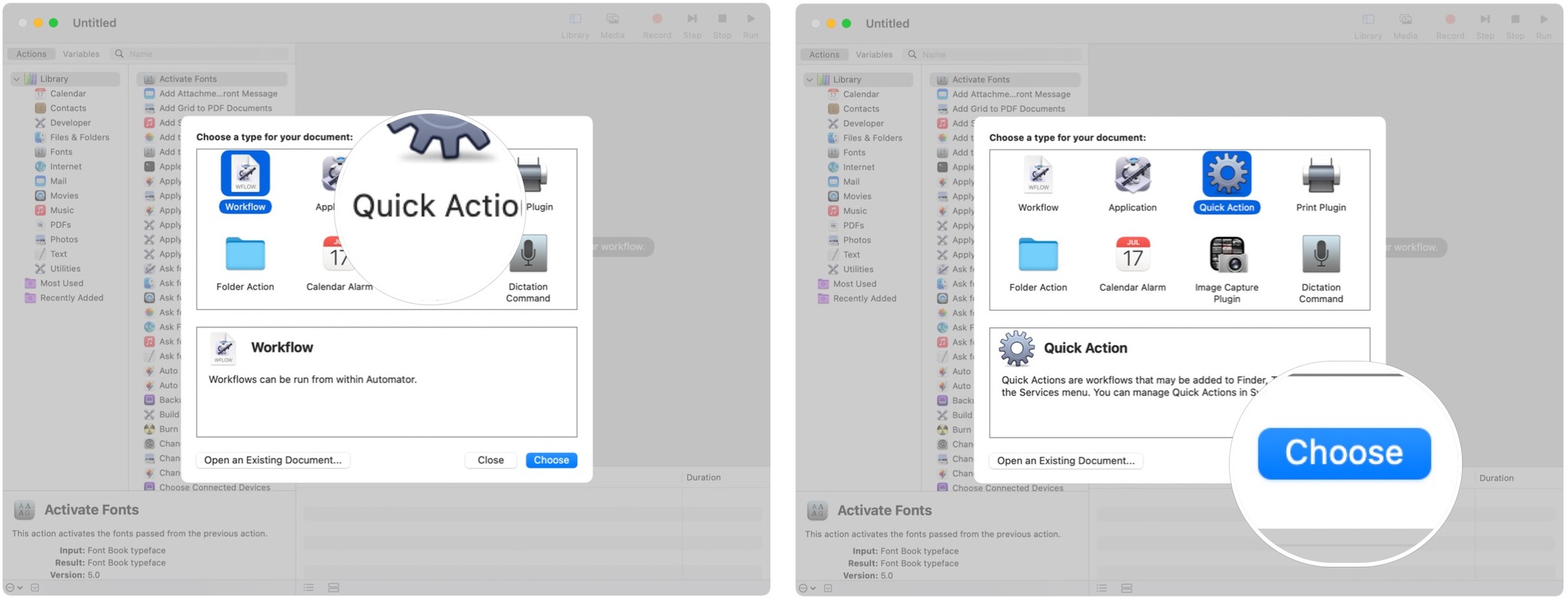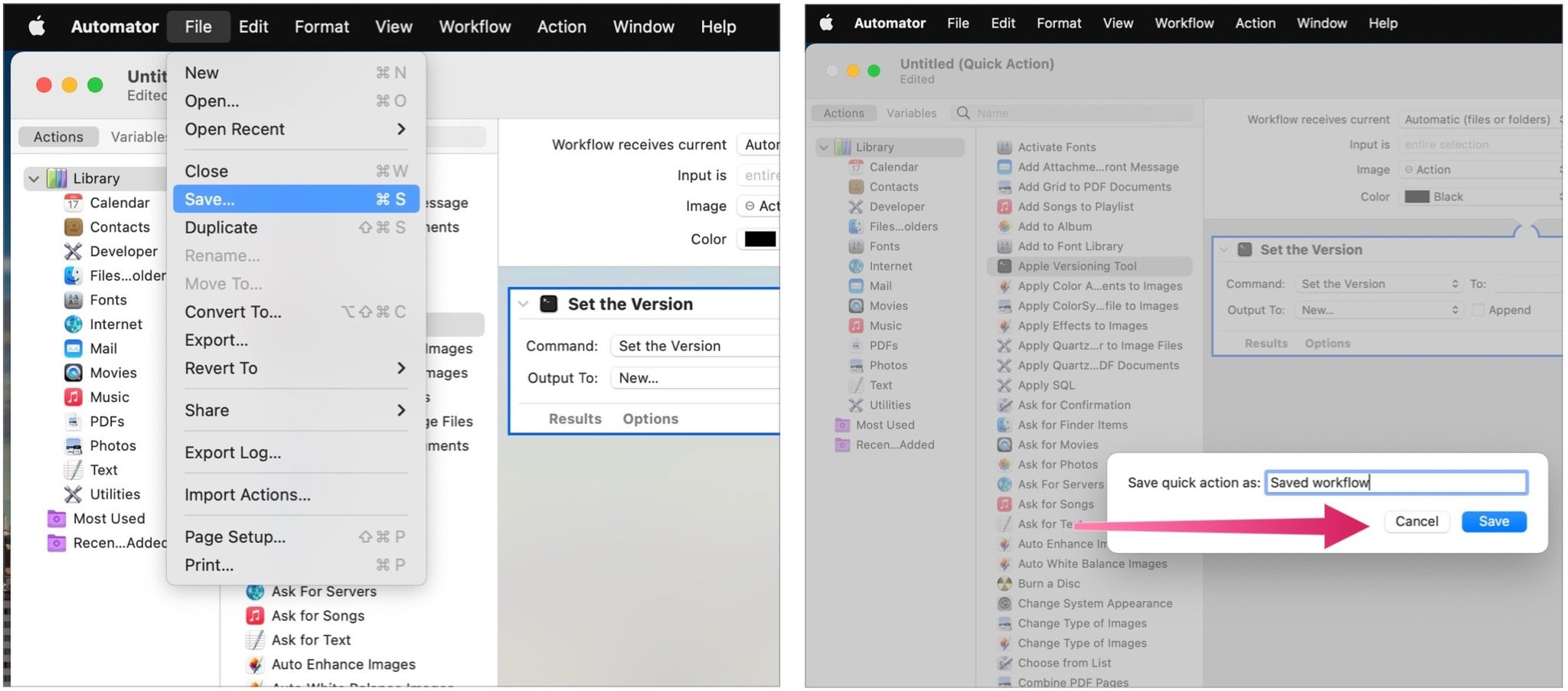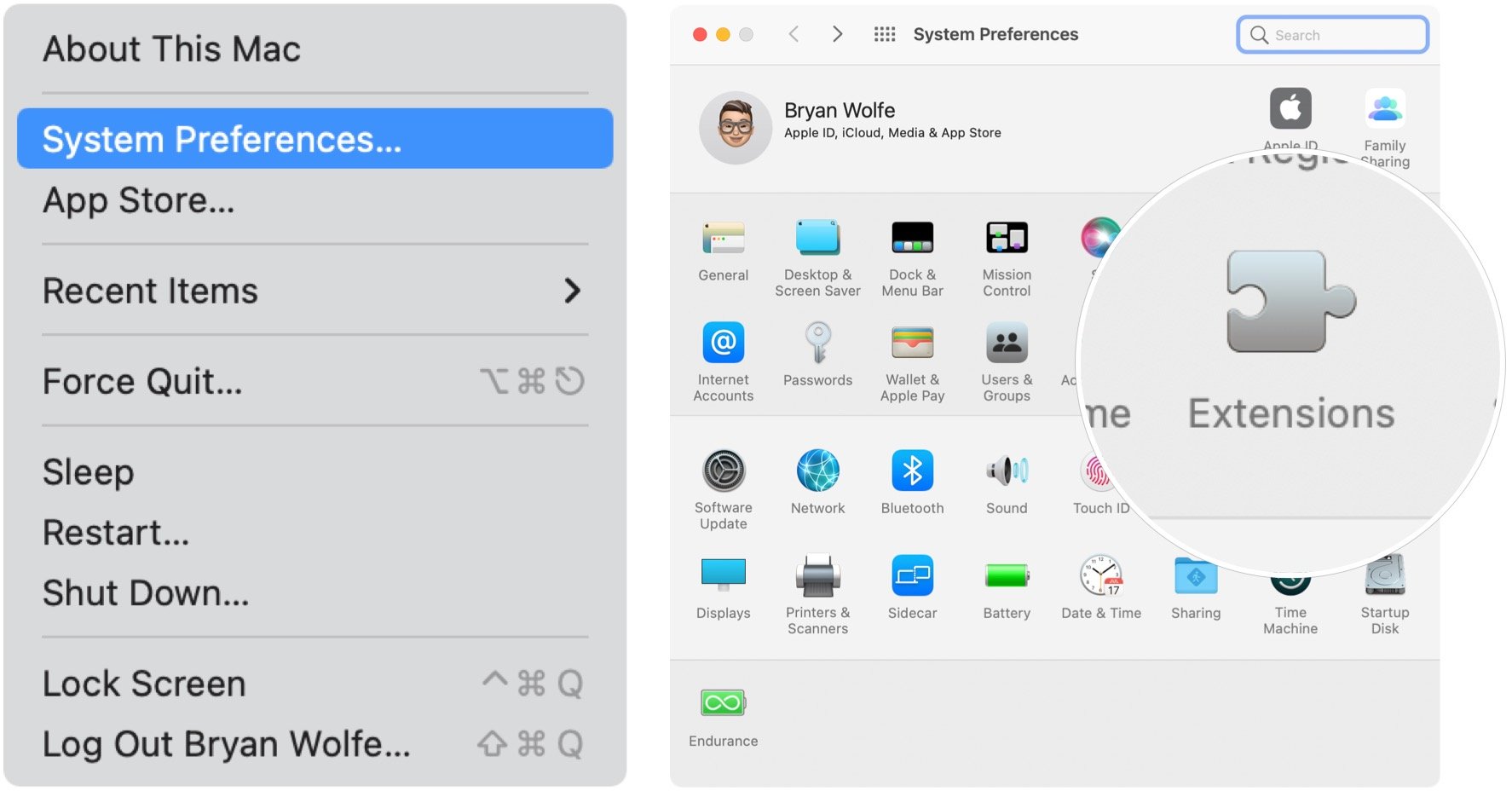How to use Quick Actions workflows on your Mac

Think about what you do on your computer each day. Are there things that are repeated time and time again? If so, it might be time to consider Quick Actions workflows on macOS. The time-saving solution lets you add automation to tasks you're already performing every day on your Mac. Quick Actions workflows were launched initially with macOS Mojave and are available on macOS Monterey or later on the best Macs.
As the tool's name suggests, Quick Actions workflows are a way you can automate tasks you were going to perform anyway. When created, Quick Actions workflows are accessible from Finder windows, the Services menu, and on MacBook Pros with a Touch Bar.
As I originally described it on TechRadar, macOS Automator is the secret sauce that goes into Quick Actions workflows. You can put together a series of steps or actions to create one automated task using it.
Here's a look at how they work.
How to create a Quick Actions workflow
Here's how to get started with Quick Actions workflows:
- Open the Automator app on your Mac. It's located in the Applications folder or by searching with Spotlight.
- Select Quick Action in the Automator box.
- Click Choose.
- Choose from the available options to begin building your Quick Actions workflow:
- Workflow receives current: The type of data used as input to the workflow. If you choose Automatic, Automator guesses the type of input you want to use in your workflow.
- Application: The app or apps you want to use to process your workflow. Each app must be open for the workflow to be available.
- Input is: If the workflow receives input from URLs, addresses, phone numbers, dates, or email addresses, you can specify different input options.
- Output replaces selected text: When the workflow receives input from Text or Rich Text, you can specify that the output replaces the selected text.
- Image: An image for your Quick Action. You can select an image on your Mac or choose an image from the menu.
- Color: A color for your Quick Actions (visible in the Touch Bar only).
- Add actions to your workflow. You'll find actions organized in the library in the first column on the left. Pick from the library, then choose an action in the second column. Finally, drag your action into the third column.
- Repeat Step 4 to include additional actions.
- Select File > Save to save your workflow when finished.
- Type in the name of your project in the pop-up box.
- Choose Save in the pop-up box.
An Example
An often-advertised Quick Actions workflow in Automator is one that automatically converts images into JPG format. In the following example, you'll learn how to create this workflow and use it on your Mac. When finished, the workflow will allow you to easily convert images in one location into JPG files.
- Open the Automator app on your Mac. It's located in the Applications folder or by searching with Spotlight.
- Select Quick Action in the Automator box.
- Choose from any of the options shown above.
- Choose File & Folders in the first column.
- Next, select Copy Finder Items in the second column.
- Drag Copy Finder Items to the third column. You can also double-click.
- Now, choose Photos in the first column.
- Select Change Type of Images in the second column.
- Drag Change Type of Images to the third column. You can also double-click.
Next, we will tell the workflow to perform two steps: Look for images in the Download folder on the Mac, then convert those images to JPG format.
iMore offers spot-on advice and guidance from our team of experts, with decades of Apple device experience to lean on. Learn more with iMore!
- Choose Downloads under the To toggle under Copy Finder Items in the third column.
- Select JPEG under the To Type toggle under Change Type of Images in the third column.
- Select File > Save.
- Type a name for your workflow in the box.
- Click Save.
Your workflow has now been saved.
Choose which Quick Actions appear in the Finder
After creating and saving Quick Actions workflows, you'll want to choose which ones appear in the Finder. It will be easier to find the workflows for use by doing so. All Quick Actions workflows appear in Finder windows, the Services menu, and the Touch Bar by default. However, you can change which Quick Actions appear in the Finder and Touch Bar.
- Choose the Apple icon at the top left of the menu bar.
- Select System Preferences.
- Click Extensions.
- Choose Finder in the left column.
- Select the checkbox next to each action you want to be available from the Finder.
The checked actions now show on the Finder windows on your Mac.
Make it happen
As you can see, Quick Actions workflows in macOS can save you time and energy by adding automation to tasks you're already performing. Start using them today!

Bryan M. Wolfe has written about technology for over a decade on various websites, including TechRadar, AppAdvice, and many more. Before this, he worked in the technology field across different industries, including healthcare and education. He’s currently iMore’s lead on all things Mac and macOS, although he also loves covering iPhone, iPad, and Apple Watch. Bryan enjoys watching his favorite sports teams, traveling, and driving around his teenage daughter to her latest stage show, audition, or school event in his spare time. He also keeps busy walking his black and white cocker spaniel, Izzy, and trying new coffees and liquid grapes.








